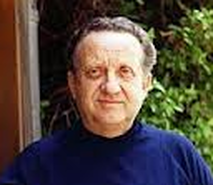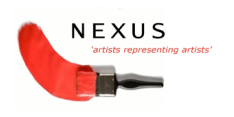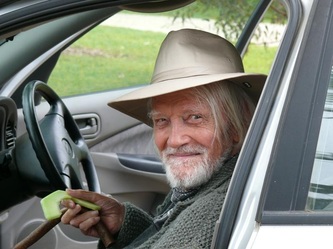Australian Artwork
Brett Whitely
|
Arthur Boyd
|
David Boyd
|
Charles
|
John Olsen
|
"I was intrigued and enormously drawn to "The image, the recognizable shape, the meaningful symbol, is the basic unit of [the artist's]
extremism by people who had blown their language. It is born of past experience and refers back to past experience — and it communicates
lives or who had taken their lives outside because it has the capacity to refer to experiences that the artist shares with his audience"
the normal conventions of society."
Brett Whiteley Antipodean artists manifesto 1959 - Charles Blackman, Arthur Boyd, David Boyd, John Brack, Robert Dickerson,
John Perceval, & Clifton Pugh.
Born in Newcastle in 1928, John Olsen is now considered one of Australia's most influential abstract painters. With a desire to depict the experience of the Australian 'landscape' in a new and contemplative way, his signature style of dots and irregular lines or squiggles has made him a master of his craft. He was awarded the Order of Australia in 2001 and has won a number of significant Australian Art Prizes including the Archibald in 2005 for his self portrait Janus Faced.
John Olsen Biography
extremism by people who had blown their language. It is born of past experience and refers back to past experience — and it communicates
lives or who had taken their lives outside because it has the capacity to refer to experiences that the artist shares with his audience"
the normal conventions of society."
Brett Whiteley Antipodean artists manifesto 1959 - Charles Blackman, Arthur Boyd, David Boyd, John Brack, Robert Dickerson,
John Perceval, & Clifton Pugh.
Born in Newcastle in 1928, John Olsen is now considered one of Australia's most influential abstract painters. With a desire to depict the experience of the Australian 'landscape' in a new and contemplative way, his signature style of dots and irregular lines or squiggles has made him a master of his craft. He was awarded the Order of Australia in 2001 and has won a number of significant Australian Art Prizes including the Archibald in 2005 for his self portrait Janus Faced.
John Olsen Biography
Yosl Bergner

Yosl Bergner is a mid 20th century Viennese-born Melbourne and Israeli painter who was a contemporary of
Boyd and Perceval and an active member of Melbourne's Contemporary Art Society together with his friends
Noel Counihan and Vic O'Connor. Bergner's paintings were among the first to address the specific plight of Indigenous Australians and his later work took inspiration from the works of German writer Franz Kafka.
The group painted the life they saw on Melbourne streets. He first exhibited with Boyd and Counihan at the University of Melbourne in 1939. Bernard Smith wrote in 1943 that Bergner, Boyd and Perceval constituted 'the most vital movement in Australian art today’. Some of Bergner’s paintings were the first to address the specific plight of Aboriginal Australians, according to Mellick.
'He recalled: “I did not know what an Aborigine was. He did not look like a Negro, more like a Jew… I painted these people with the faraway look in their eyes from generations before. They were displaced and I felt I identified with them.’ Works included Two Women 1942 (NGV) – one an Aboriginal.
Boyd and Perceval and an active member of Melbourne's Contemporary Art Society together with his friends
Noel Counihan and Vic O'Connor. Bergner's paintings were among the first to address the specific plight of Indigenous Australians and his later work took inspiration from the works of German writer Franz Kafka.
The group painted the life they saw on Melbourne streets. He first exhibited with Boyd and Counihan at the University of Melbourne in 1939. Bernard Smith wrote in 1943 that Bergner, Boyd and Perceval constituted 'the most vital movement in Australian art today’. Some of Bergner’s paintings were the first to address the specific plight of Aboriginal Australians, according to Mellick.
'He recalled: “I did not know what an Aborigine was. He did not look like a Negro, more like a Jew… I painted these people with the faraway look in their eyes from generations before. They were displaced and I felt I identified with them.’ Works included Two Women 1942 (NGV) – one an Aboriginal.
* Please note: Nexus Modern Art does not directly represent these 'Blue Chip' artists, foundations, trustees or family representatives, the works have been made available for sale on
behalf of various private collectors.








